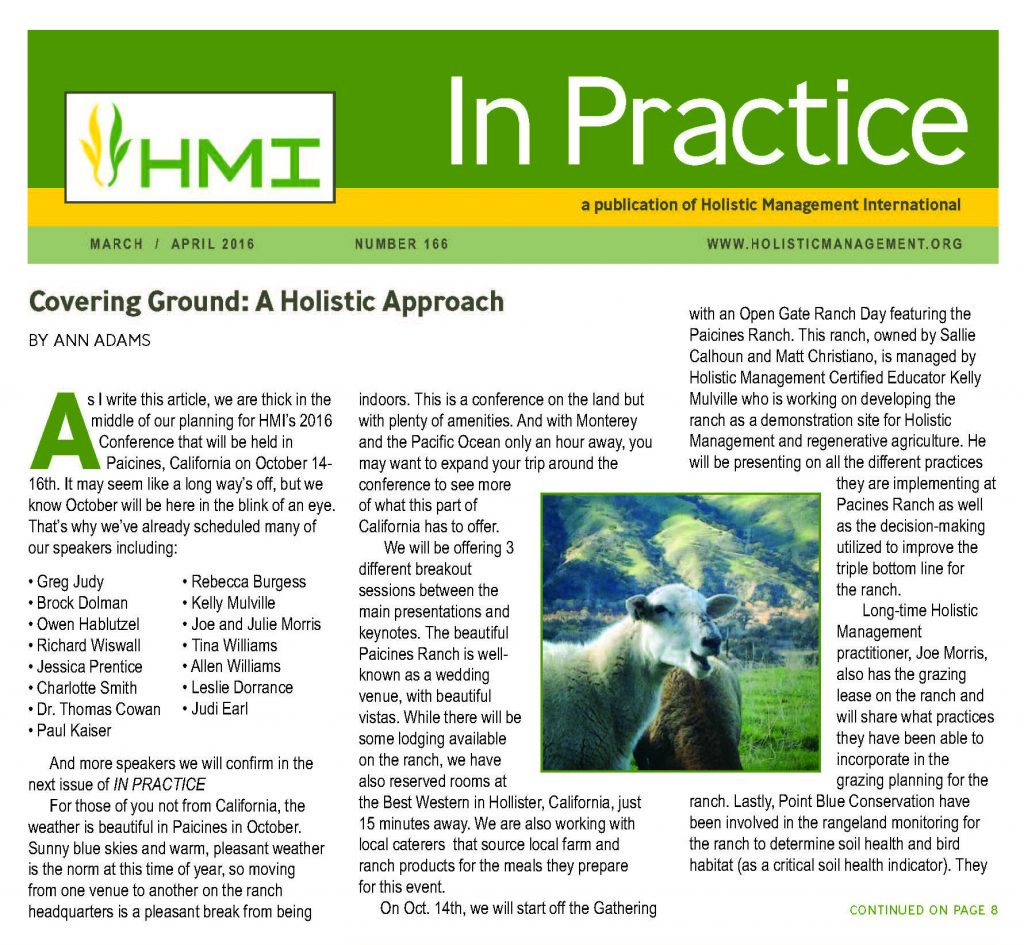This article by Dr. Ann Adams was originally published in IN PRACTICE, Issue #174.
With all the rain that California experienced during the winter of 2017, the joy of rain that stopped the devastating years of drought turned to dread of the floods and erosion that occurred from landscapes devoid of growing plant matter. Holistic Management practitioner Joy Law shared some dramatic photos of the difference between her landscape and her neighbors due to the difference between her holistic planned grazing and the neighbor’s conventional grazing.
As you can see in the photos, Joy’s ponds are clear. But, the neighbor’s land has eroded causing not only more issues with the health of ground water in years to come, but also added a great deal of sediment load in their pond. Joy noted that this is similar to the issues currently being faced in the Mississippi Delta with much erosion of croplands into the Mississippi River due to all the bare ground throughout the Midwest with conventional cropping.
With this kind of rain Joy says she is able to produce 6-12 inches of plant growth after full recovery of grasses. As you can see in the photo, the neighbor’s grass is not as tall as the grass on Joy’s property as they both respond to the abundance of rain.
The average rainfall in that part of central California is supposed to be 12-15 inches. In 2013/2014 Joy only received 4.8 inches of rain. In 2014/2015 the rain improved with 8.5 inches. In 2016 she received 14.3 inches. By March of 2017 she had received over 21 inches of rain.
Joy manages approximately 100 useable acres. She took over management of that land nine years ago. The management before she took over was conventional and the plants were eaten to the nub and there were no perennials. After nine years of holistic planned grazing Joy says she now has lots of perennials and wildflowers. She uses three to four horses to graze her paddocks which are sized anywhere from 3-35 acres. She has nine paddocks and gives those paddocks 60-90 days recovery during the growing season and 120 days recovery during dormant season. Besides using the horses for animal impact to incorporate stockpiled grasses into the ground and limiting their grazing to provide for adequate recovery, she also built some one-rock dams to slow the water down and increase the water cycle effectiveness.
She has found that horses will eat medusa grass (a non-desirable species) when it is young so she uses the horses as a way to encourage desirable forage species. With longer recovery she gets more grass to create a mulch so that there is more litter for the horses to step on even during the rainy winters so the horses don’t leave prints and create less soil compression. She does periodically bring in cattle (approximately 10 pairs) for grazing in the spring for about two months for additional animal impact.
Joy took these pictures on February 23, 2017 to show the power of Holistic Management and her excitement that her land made it through the drought ready to receive the blessing of rain.
Do you want more stories like this?
IN PRACTICE, a Bi-Monthly Journal by HMI
is HMI’s bi-monthly journal for anyone interested in land health, food security and cultivating thriving communities. It’s full of inspiring articles that will keep you in touch with the progress, innovations and excitement generated by people who are changing their lives by putting Holistic Management into practice.
2,200 loyal subscribers (90% in the US) eagerly await each issue. Be sure to sign up so you can learn how people are helping create healthy land, healthy food and healthy lives and stay connected with the Holistic Management community!
You can purchase a subscription in the HMI store. If you’ve never received In Practice before, email us at hmi@holisticmanagement.org and request a FREE electronic introductory one-year subscription.


